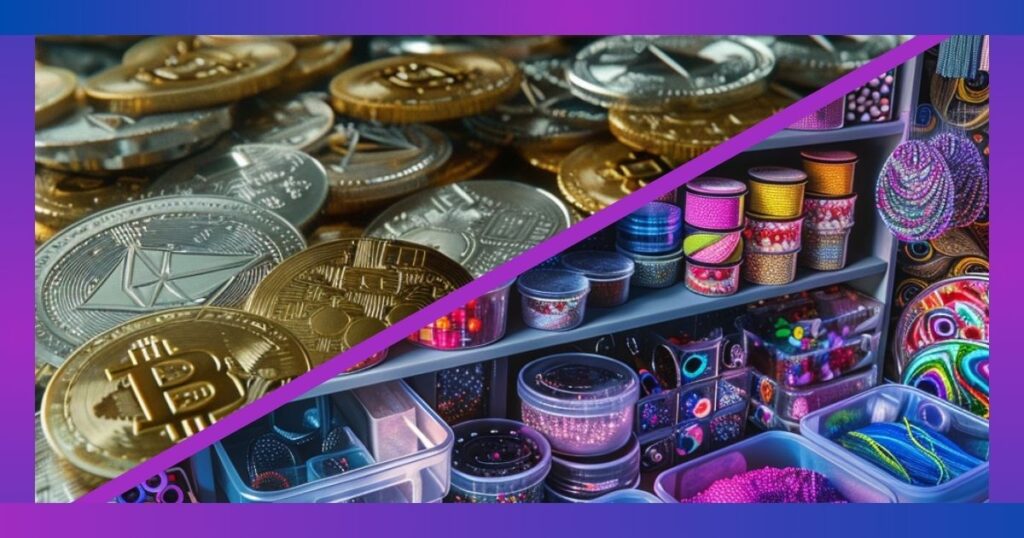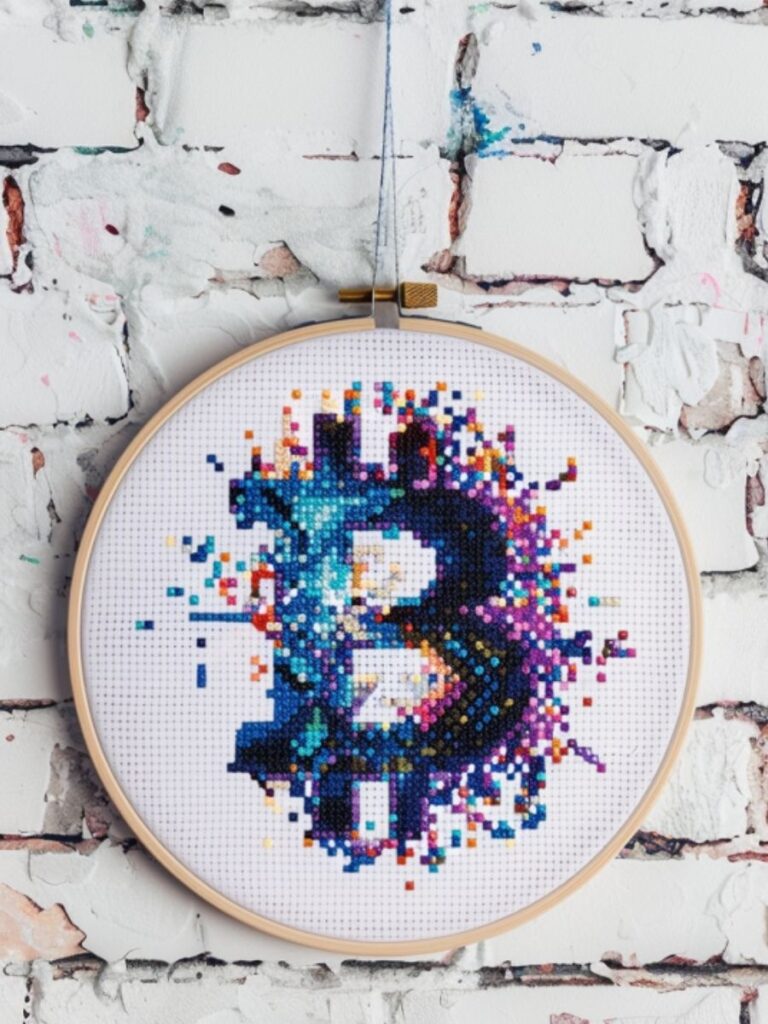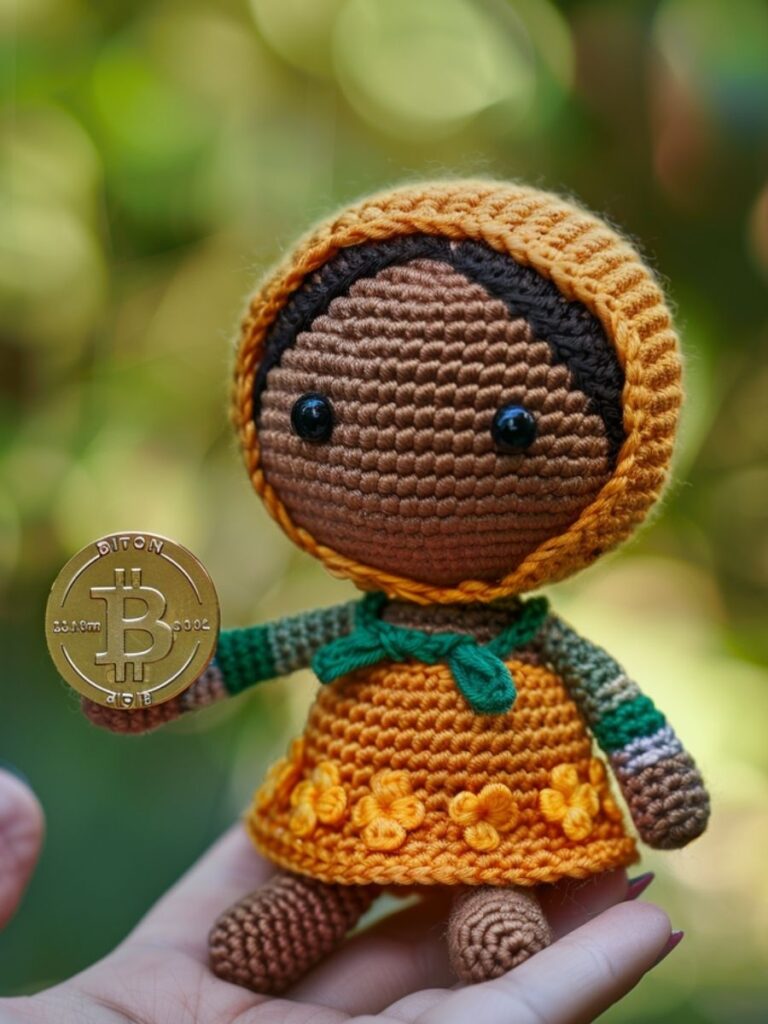
Ever feel overwhelmed by your craft area?
A few years ago, when we moved into our new house, I was in the midst of homeschooling three children, running a small business teaching piano lessons, fulfilling my duties as a music director for our church, and setting up a new household. I just didn’t have the energy at that point to organize my beloved crafts, so I dumped everything into a tiny room in the basement and shut the door.
Ever since, it’s been a bit of a nightmare to think about crafting. Even if I have the time to start a craft, the thought of finding the supplies to start a beading project or the fabric for a quilt that I bought or some extra yarn for a new sweater turns me off and I often end up doing something else.
In fact, just writing this makes me realize that I haven’t seriously crafted much in the last seven years: how sad!
Some people are like this with their investments: they have the best intentions when they set out. They set up accounts in various places, they might buy a few things or set up some protocols and strategies….but then life gets in the way and they end up abandoning their efforts.
Imagine your crypto transactions scattered across different platforms and wallets, much like craft supplies strewn across a messy room. It can be overwhelming and challenging to keep track of everything, leading to missed opportunities and potential confusion.
I’m here today to help you figure out how you can reclaim your investments!
Let’s brainstorm how you might get started.

1. Make a list
Just like when you think about organizing a craft room, the best place to start is probably to brainstorm a list of all the places you might have stashed some investment money. This might include wallets, cold-storage crypto devices, exchanges, brokerages, and all sorts of projects that you might have heard about and sent some money to.
2. Gather your materials
Once you’ve got your list of where you’ve been, you might think about what information you need to gather so that it’s all in one place. Do you still have account numbers and passwords? Are there email records that might show what you did? Do you need to find the device that helps you access your account?
3. Sort and organize
Next up if you’re organizing a craft room might be to get some good sorting bins and start grouping like craft supplies together. If you’re a crypto investor, a good crypto tax software (here’s our favorite to try with a 10% discount if you subscribe!) can do most of the heavy lifting for you.
Follow these steps:
a) Open an account with the crypto tax software.
Try our favorite one and get 10% off your subscription. (this is an affiliate link)

b) Sign into each of your crypto exchanges and retrieve your data.
This can often be done quickly by creating an API if your tax software and exchange are compatible. Otherwise you might have to look for a CSV of your history to download or take screenshots.
c) Add your blockchain addresses to your crypto tax software.
A good crypto tax software will be able to import all your transactions directly from the blockchain. The better tax software will even recognize what the various transactions are and label them, whether they are deposits, withdrawals, rewards, staking earnings, fees, LP tokens, trades, and more.
d) Find any other evidence of your crypto activities.
It’s especially important if you were involved with a protocol that has rugged and run off with your money or is just not as “typical” as an exchange or wallet. Email evidence, transactions on the blockchain, and your memory are your best tools here if the protocol no longer exists. (Bonus points if you kept some kind of log or journal!)
e) Reconcile your transactions in your crypto tax software.
You need to do this so that all of your activities are reflected, including adding transactions for any protocols or exchanges that rugged, making sure trades and other transactions are recorded correctly, and finding info on any mystery transactions.
f) Solve the mysteries.
Assembling all of your data into a crypto tax software and transaction tracker can be a great way for you to discover any crypto you forgot about. Maybe you sent some Ethereum somewhere or maybe some Bitcoin mysteriously arrived in your wallet. Sometimes these transactions hint at a wallet or exchange you forgot about. Or maybe you were sending a friend some crypto and they were returning it, who knows? But finding all of these transactions and remembering what they were helps you make sure that your crypto transactions are telling the right story for your taxes.

g) Plan your next project.
Now that you’ve got all of your data assembled and hopefully reconciled, it’s so much easier to see what your next steps are! Just like in a good craft room, you can look at your current holdings, evaluate if you still like them or if you’ve perhaps changed your tastes since you bought those original supplies, and then make a plan to take action on your next steps, whether that’s selling some positions, closing out protocols, withdrawing and cashing out funds, or maybe sending some more funds in to purchase new ideas.
In today’s fast-paced world of crypto investments, staying organized is key to success. Just like keeping your craft room tidy and efficient can boost creativity and productivity, organizing your crypto transactions can help investors stay on top of their game.
What step are you going to start today?
If you’d like professional help getting your crypto investments organized, check out our new Interactive video about the options and services we offer. Whether you are a beginning investor just starting out who wants to do it yourself or you’re a seasoned pro with a mess of transactions you’d like someone else to clean up, we can help!
Watch our short interactive video!
Try our favorite crypto tax software and get 10% off your subscription. (this is an affiliate link)
Reach out to us for any assistance with your crypto taxes. Book a call here.
Check out our Facebook Lives and YouTube channel for more info:
https://www.facebook.com/BetaVirtualAssistance
https://www.youtube.com/@betavirtualassistance
Lastly, this blog post may contain links to products that we have tried and liked. If you click on the link and make a purchase, we may earn a small commission, which does not increase the price for you nor directly affect whether or not we recommend the product.




Leave a Reply